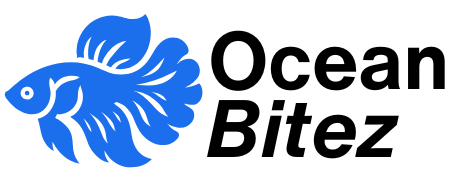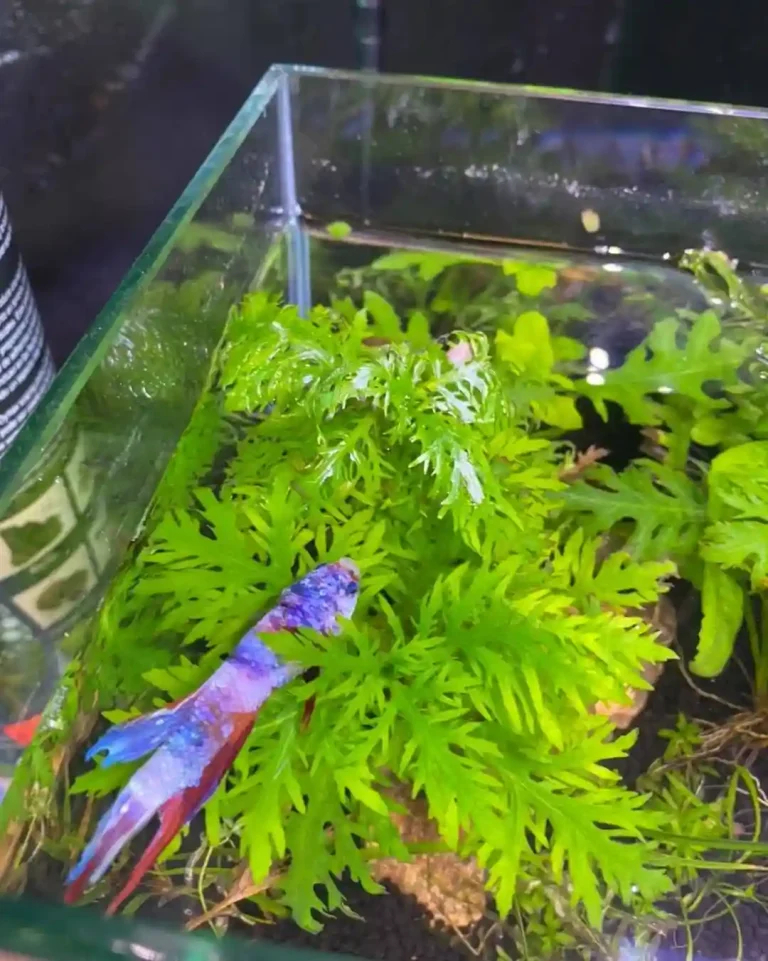9 Floating Aquarium Plants for Beginners: Easy-to-Care Options
Floating aquarium plants are an easy and beautiful way to improve your tank’s health and appearance. These plants float on the water’s surface, offering shade, absorbing excess nutrients, and reducing algae. They also help your fish feel secure and reduce stress. Best of all, floating plants don’t need special lighting, substrate, or CO₂, making them ideal for beginners.
In this guide, we’ll explore some of the best beginner-friendly floating plants for freshwater aquariums.
1. Duckweed (Lemna minor)
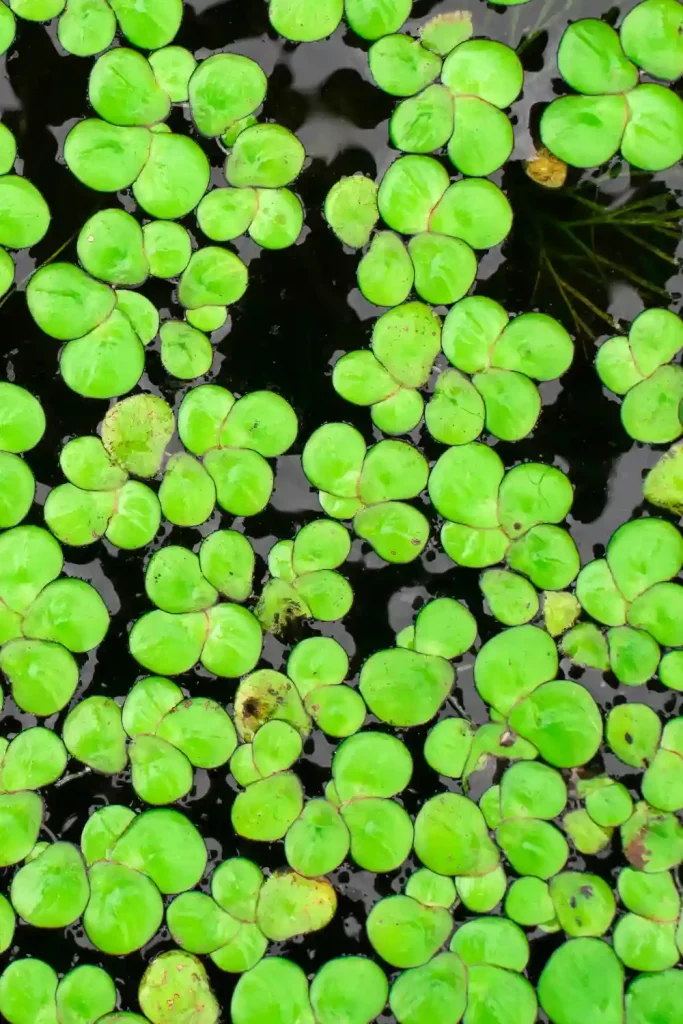
Duckweed is one of the smallest floating plants with tiny, round green leaves that spread fast. It’s excellent for soaking up ammonia and nitrates, helping maintain clean water.
- Light Requirement: Moderate to high
- Growth Rate: Very fast
- CO₂ Needed: No
- Maintenance: Requires frequent thinning to prevent clogging filters
- Best For: Shrimp tanks and low-tech setups
2. Water Spangles (Salvinia minima)
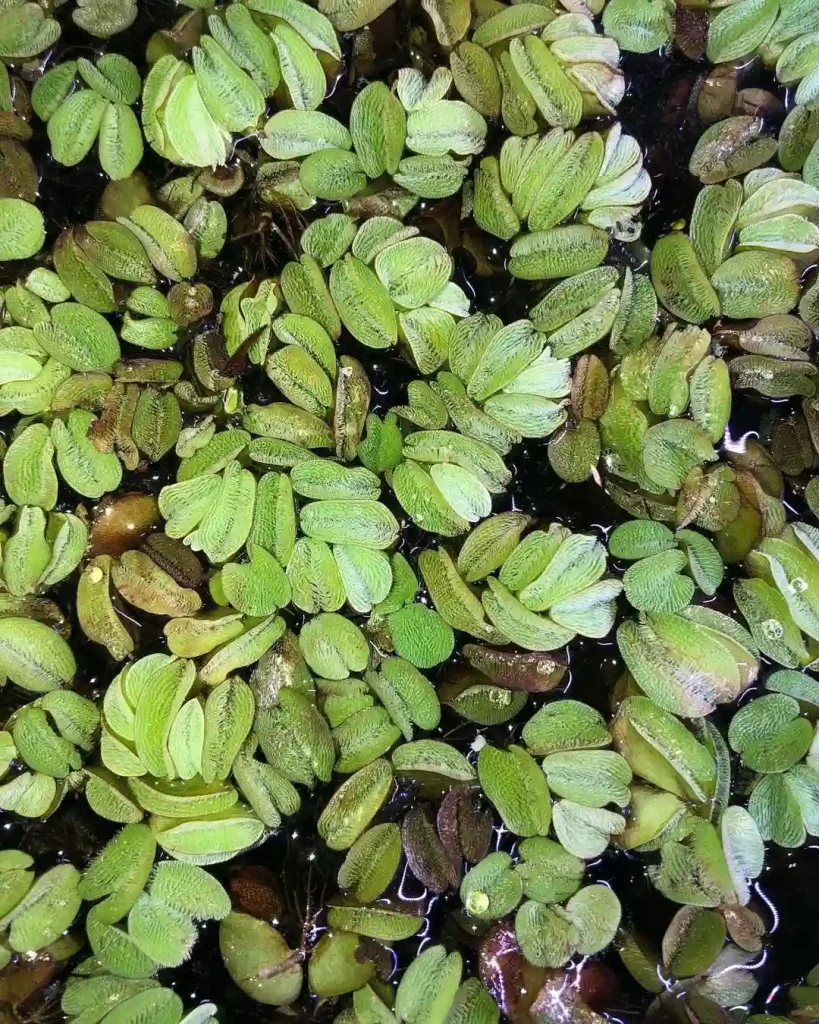
These oval-shaped floaters grow in dense mats and offer great surface coverage. Water Spangles are helpful in controlling algae by absorbing excess nutrients.
- Light Requirement: Moderate to high
- Growth Rate: Fast
- CO₂ Needed: No
- Maintenance: Weekly trimming recommended
- Best For: Low-maintenance community aquariums
3. Amazon Frogbit (Limnobium laevigatum)
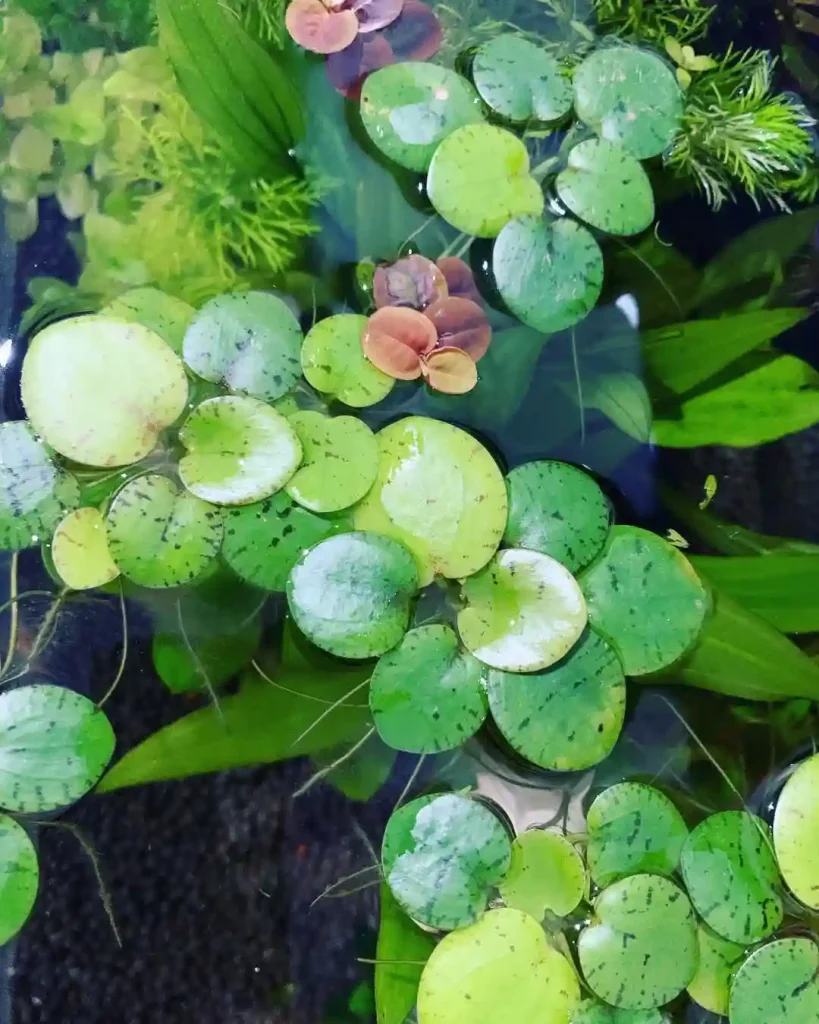
Resembling tiny lily pads, Amazon Frogbit creates natural-looking shade and helps mimic riverbank habitats.
- Light Requirement: Moderate to high
- Growth Rate: Moderate to fast
- CO₂ Needed: No
- Maintenance: Remove old or dying leaves to maintain health
- Best For: Peaceful tanks and surface-dwelling fish
4. Red Root Floater (Phyllanthus fluitans)
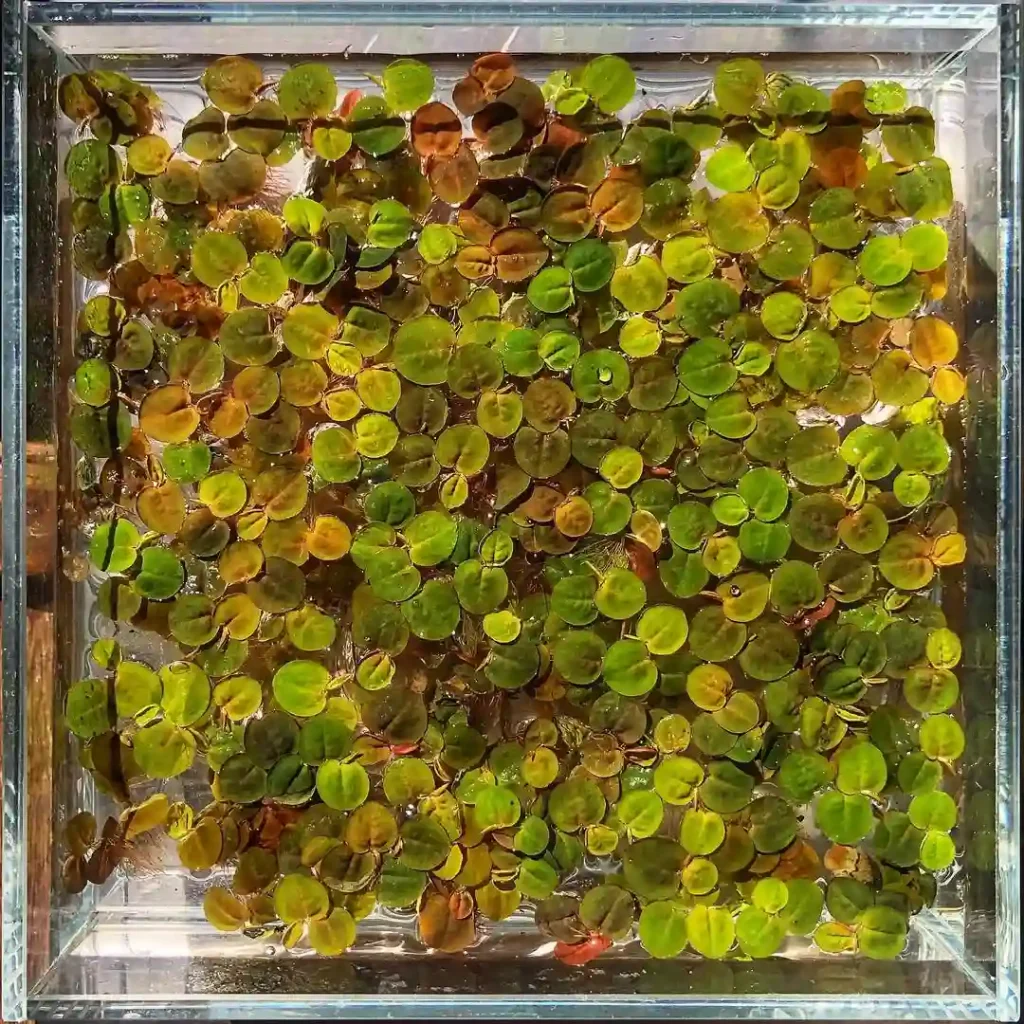
This striking plant features red-tinted leaves and vibrant red roots, making it a favorite in well-lit planted tanks.
- Light Requirement: High (for best red coloration)
- Growth Rate: Moderate
- CO₂ Needed: No
- Maintenance: Trim regularly to avoid overcrowding
- Best For: High-light planted tanks and visual appeal
5. Hornwort (Ceratophyllum demersum)
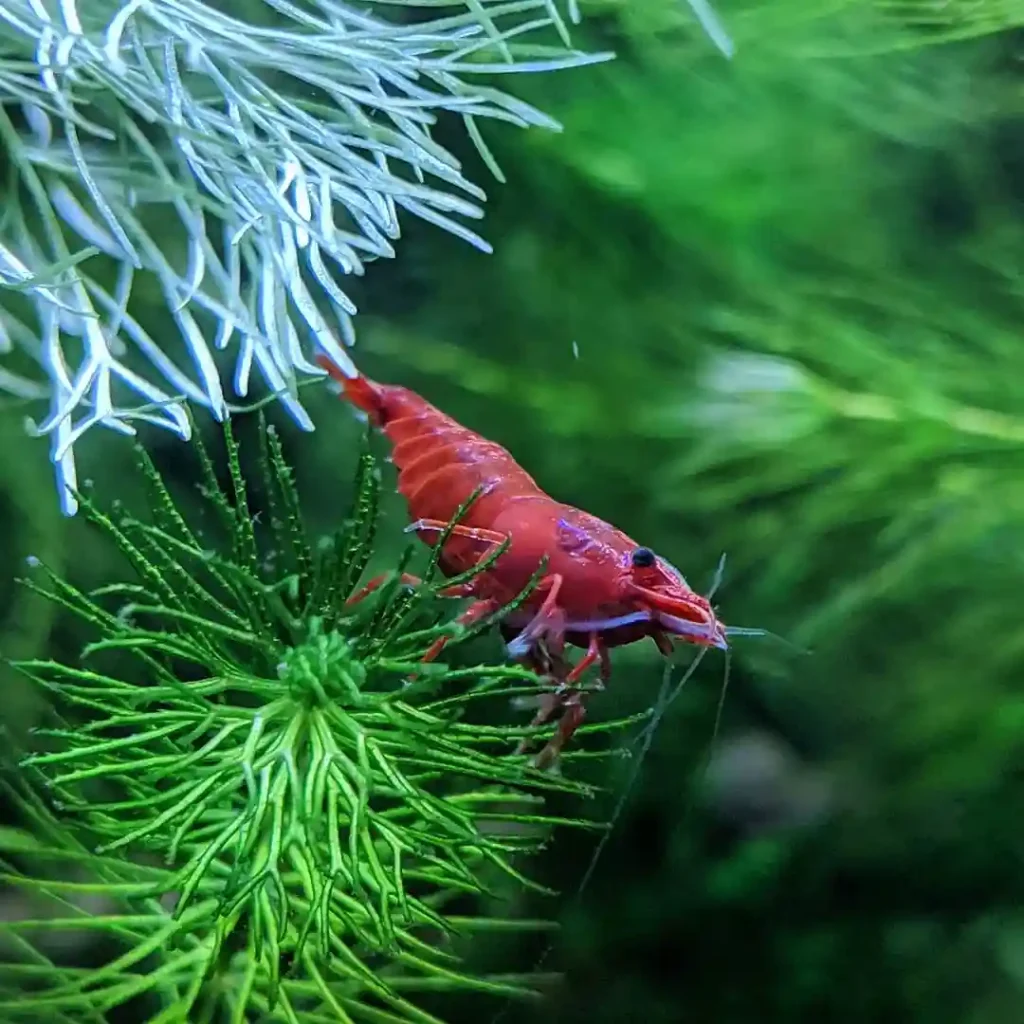
Hornwort can be floated or planted. It grows long, feathery stems that provide hiding spots and help remove excess nutrients.
- Light Requirement: Low to moderate
- Growth Rate: Fast
- CO₂ Needed: No
- Maintenance: Prune often and remove decaying parts
- Best For: Coldwater tanks and beginner setups
6. Water Lettuce (Pistia stratiotes)
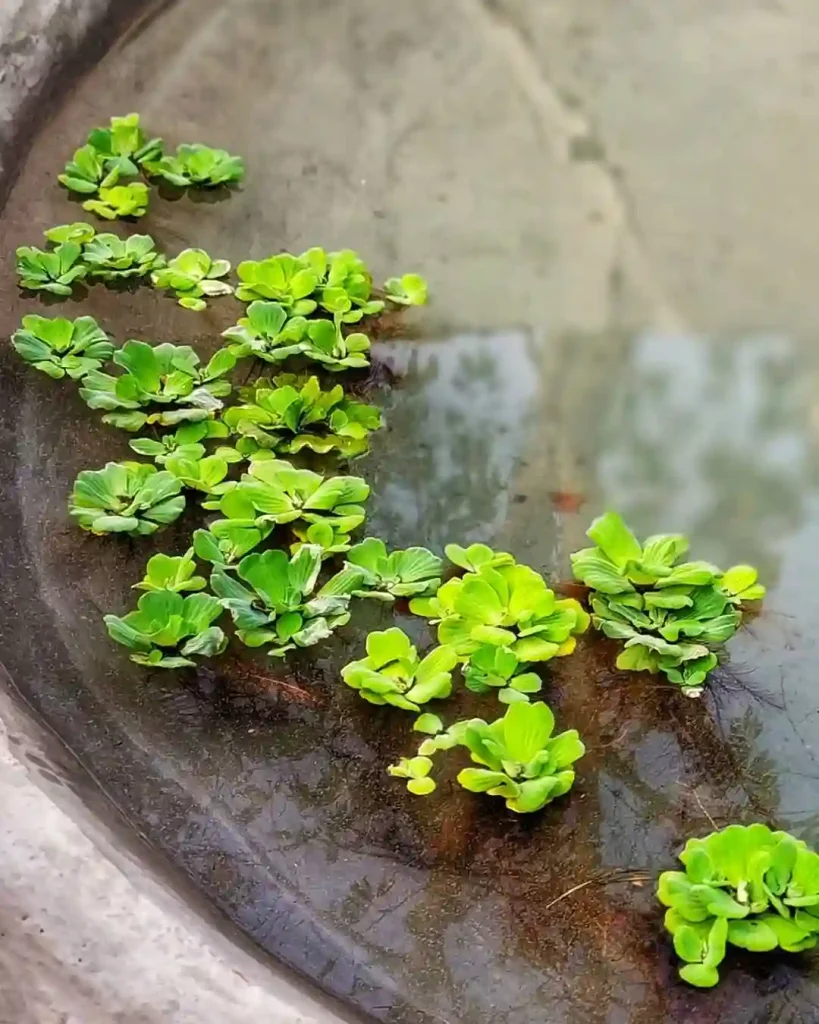
With soft, rosette-like leaves, Water Lettuce adds a lush, tropical look to open-top tanks.
- Light Requirement: Moderate to high
- Growth Rate: Fast
- CO₂ Needed: No
- Maintenance: Needs space; thin weekly
- Best For: Open-top aquariums with surface space
7. Java Moss (Taxiphyllum barbieri)
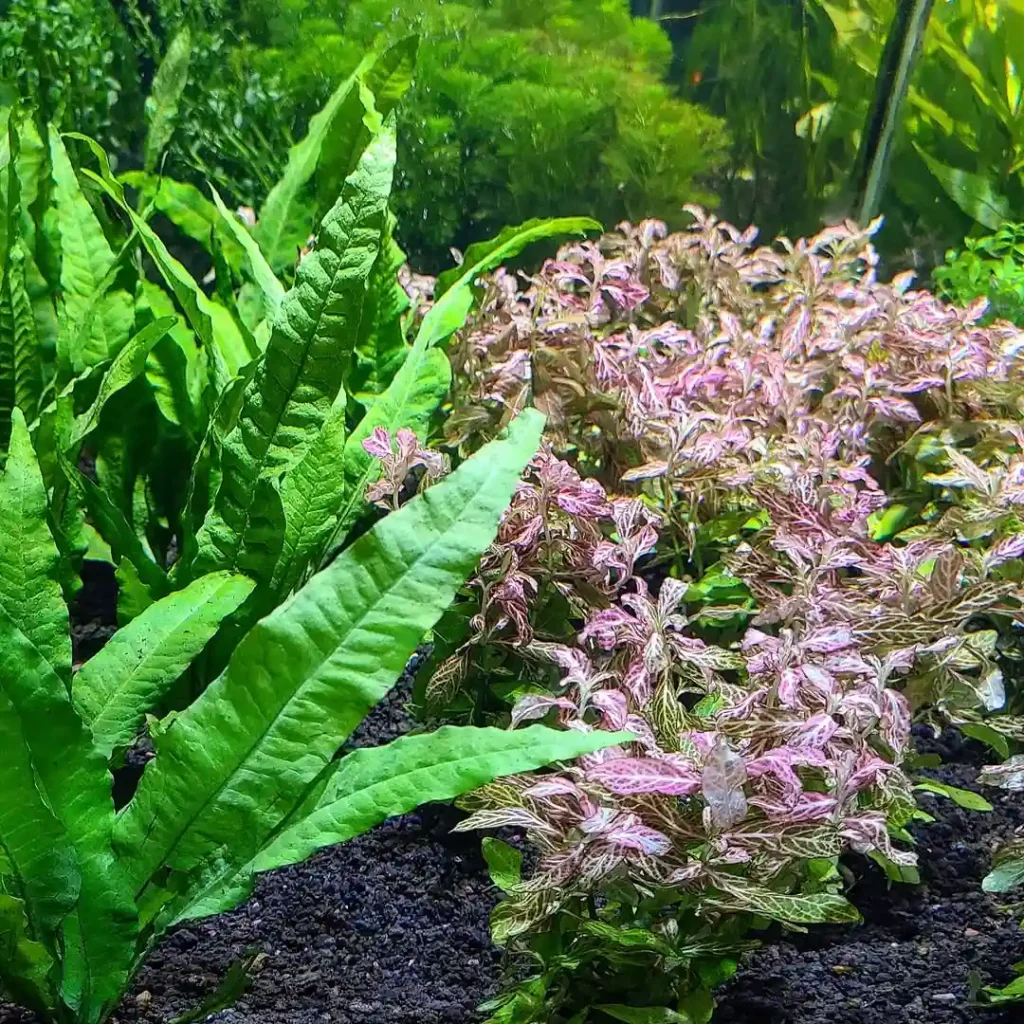
While not a true floating plant, Java Moss can float freely or be attached to surfaces. It’s hardy, easy to care for, and great for breeding tanks.
- Light Requirement: Low to moderate
- Growth Rate: Moderate
- CO₂ Needed: No
- Maintenance: Trim and rinse occasionally
- Best For: Shrimp tanks and natural aquascapes
8. Riccia Fluitans (Crystalwort)
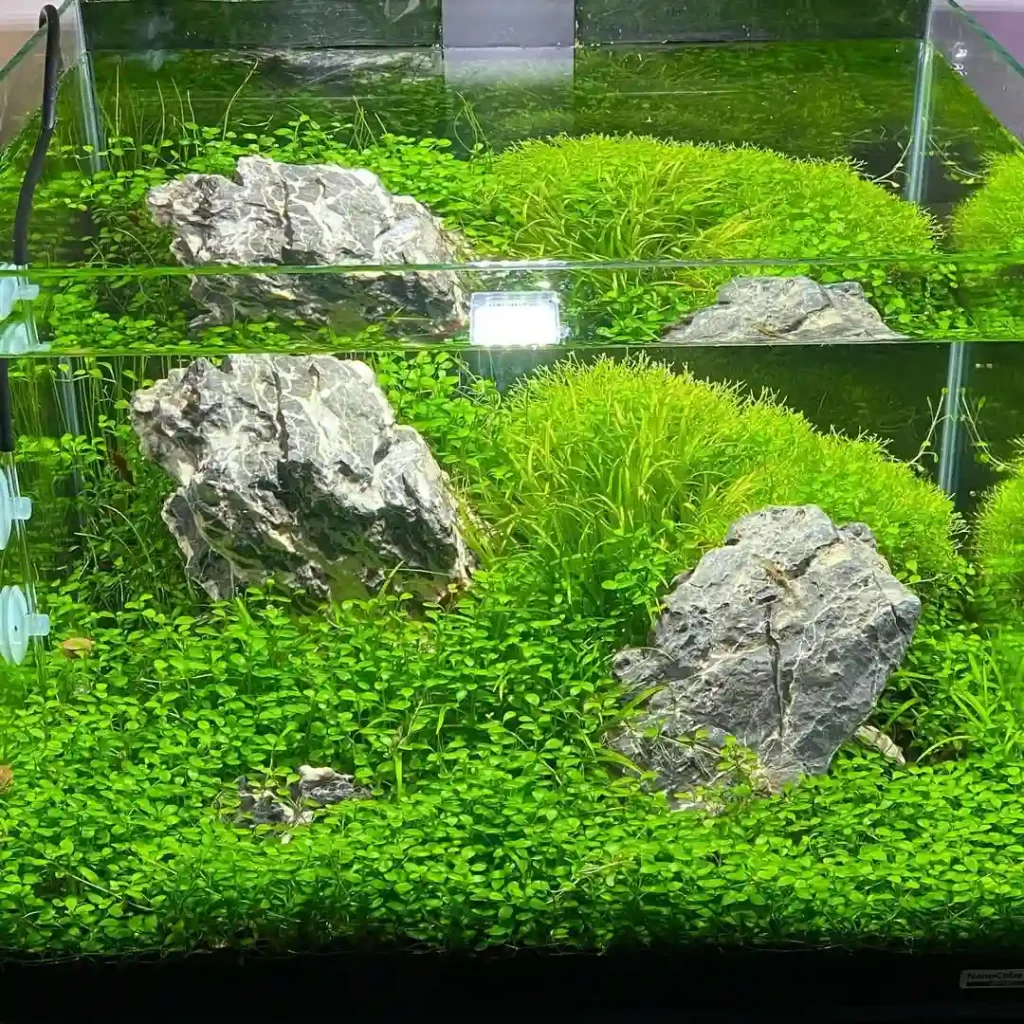
Riccia grows in compact, bright green mats. It can float or be tied to wood or rocks for aquascaping.
- Light Requirement: Moderate to high
- Growth Rate: Fast
- CO₂ Needed: No
- Maintenance: Trim often to prevent mess
- Best For: Shrimp tanks and high-tech aquariums
9. Azolla (Azolla filiculoides)

Also known as mosquito fern, Azolla features fine, feathery leaves and can cover water surfaces quickly. It’s more commonly used in outdoor setups.
- Light Requirement: Moderate to high
- Growth Rate: Fast
- CO₂ Needed: No
- Maintenance: Requires frequent thinning
- Best For: Large aquariums or outdoor ponds
Read also:
10 Aquarium carpet plants for beginners
10 Best Foreground Aquarium Plants for Carpets & Aquascapes
Controlling Floating Plant Growth
Floating plants can grow quickly and may need maintenance to avoid tank issues. Here are a few tips:
- Use floating rings or DIY plant corrals to keep them contained
- Thin the plants weekly with aquarium scissors
- Keep light and nutrients balanced to avoid overgrowth
- Avoid strong surface water flow near plants
Final Tips for Beginners
- Start with one or two species before mixing floaters
- Provide enough light, but avoid excessive brightness
- Use pre-filters or guards to keep roots from clogging filters
- Leave some open surface space for gas exchange and rooted plants
FAQs
Do floating plants need CO₂?
No. Most floating plants gather CO₂ from the air at the surface.
Why are my floating plants turning brown?
Likely due to poor light, low nutrients, or stagnant water. Trim dead leaves and improve conditions.
Can floating plants block my filter?
Yes. Use floating rings or guide them away from filter intakes.
Do floating plants reduce algae?
Yes. They outcompete algae for nutrients.Are floating plants good for fry or shrimp?
Absolutely. They offer cover, shelter, and grazing biofilm.
